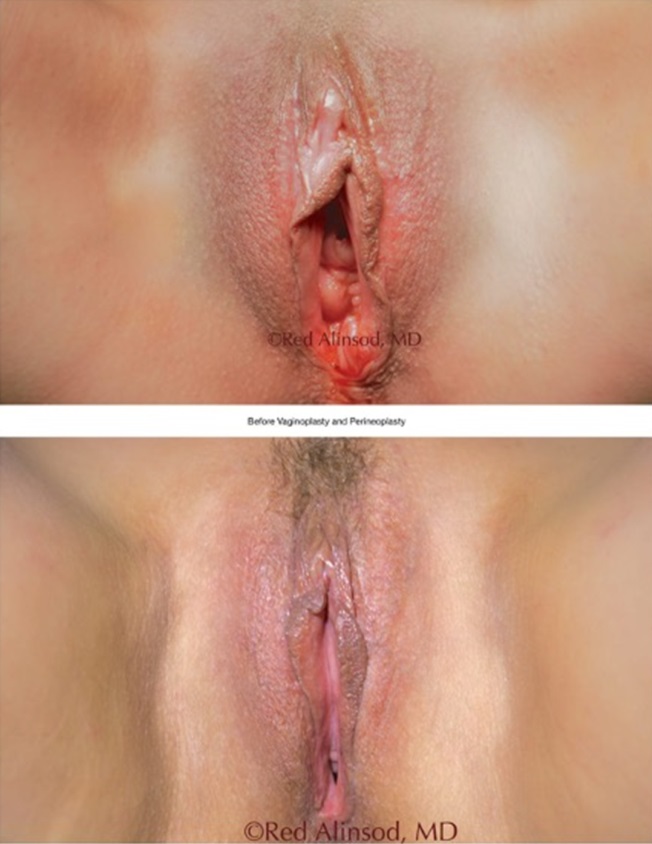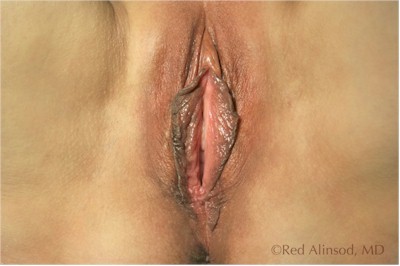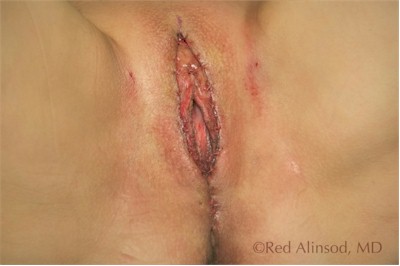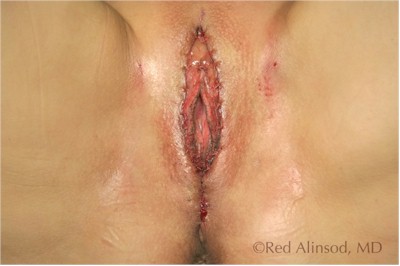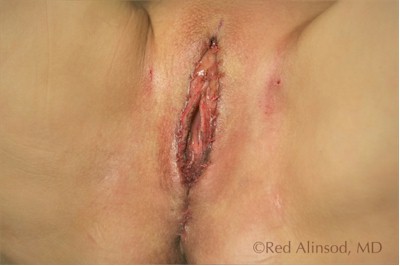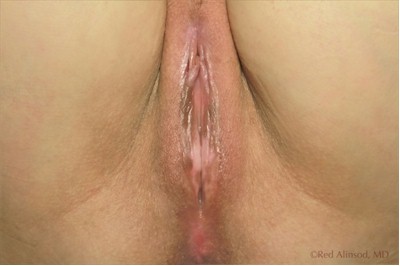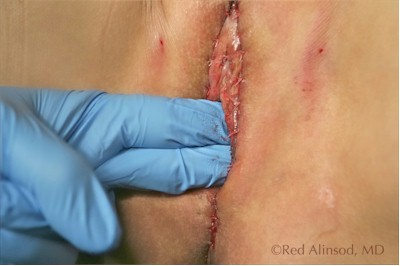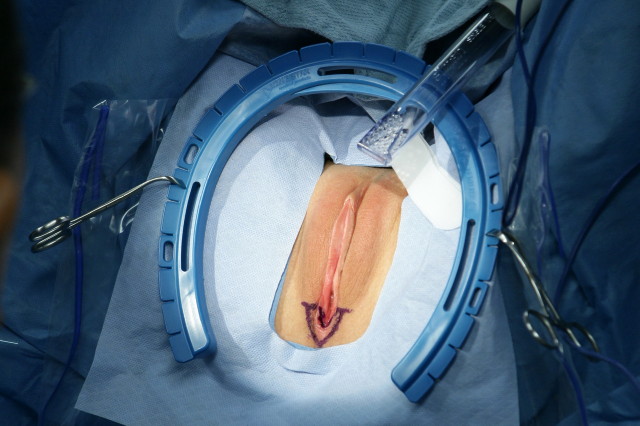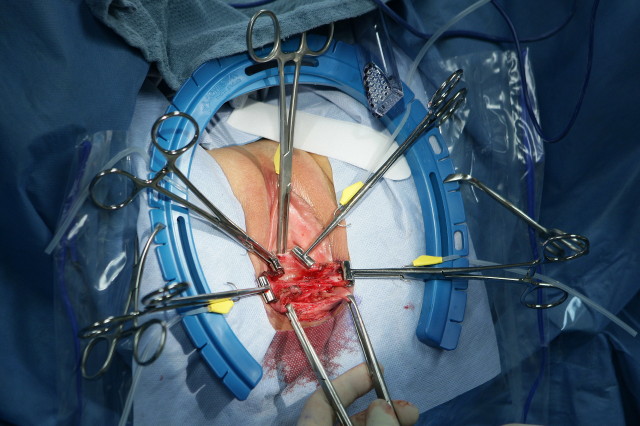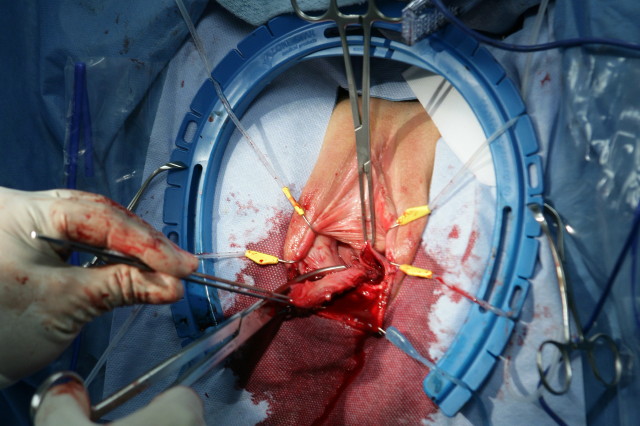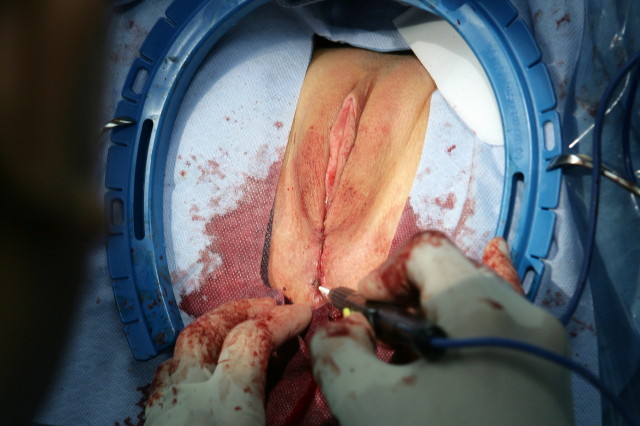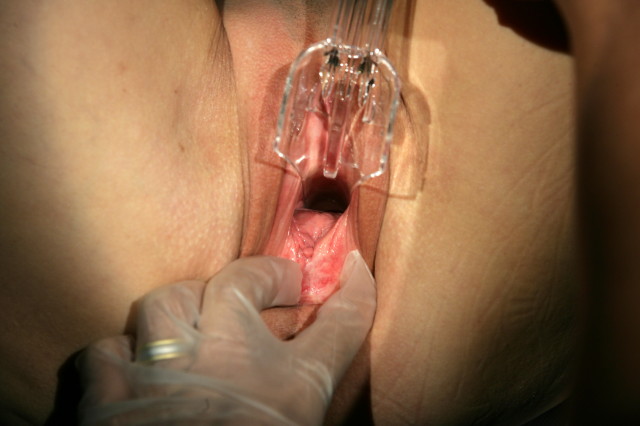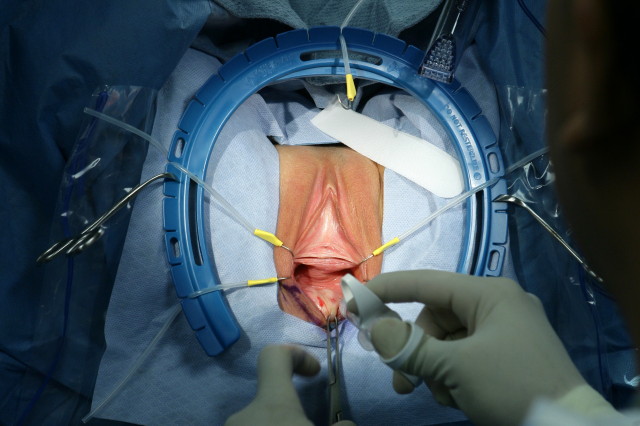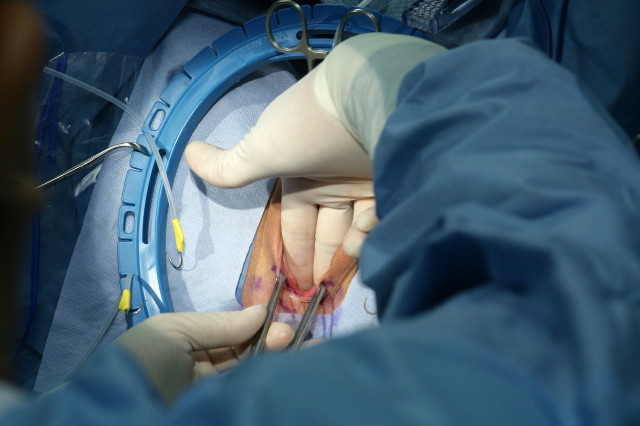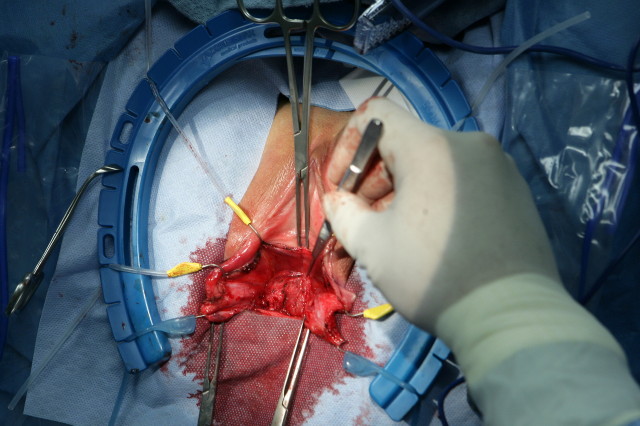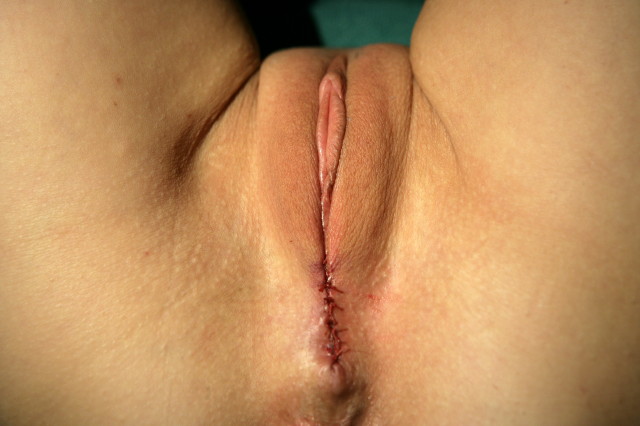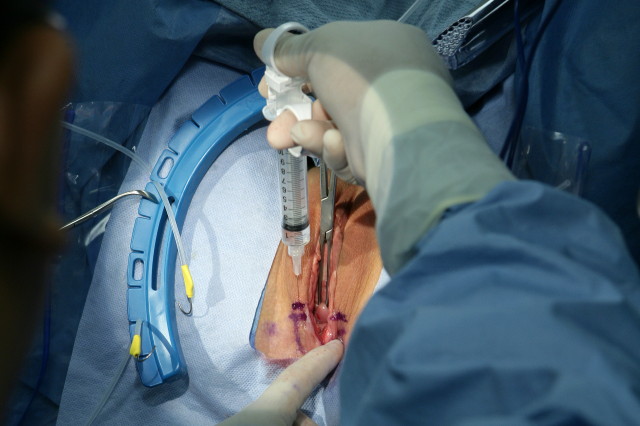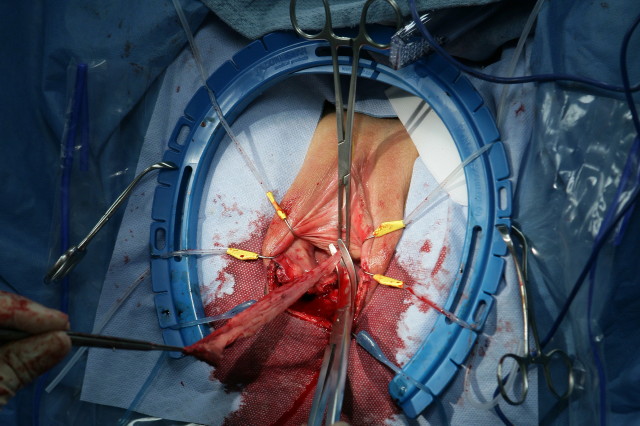Perineoplasty/ Perineorrhapy
The part you see between the vagina and the rectum is called the perineum. This is where birth trauma occurs and where you are cut with an episiotomy. This is the area that husbands request the Obstetrician to place that famous “Husband Stitch” that never works. Perineoplasty (or Perineorrhaphy) tries to make this often-damaged area appear normal by removing loose skin, skin tags, and eliminate the gaping. This surgery uses several layers of suturing to bring the stretched-out tissues into the middle and make an old looking letter U become a youthful letter V at the opening of the vagina.
This procedure has been advertised to “Enhance Sexual Gratification” and is what most plastic surgeons do as their Vaginoplasty/Vaginal Rejuvenation surgery because it does tighten the opening and increase frictional forces. There is no deep work involved and it is not a full-length surgery. It is less risky than a vaginoplasty since you are away from rectum and bowel. Like I said earlier this procedure almost always accompanies vaginoplasty since you are working in the same area. This is all you need if you have no internal looseness and only want the outside to look better and feel tighter at entry. This procedure takes half an hour to complete.
Perineoplasty Case Study 1
Patient History: Beautiful and active lady in her early sixties wanted a more pleasing appearance to her vulvovaginal area as well as improved tighness of her vaginal canal for a more satisfying intimate life. She did not like the dark labial edges and the “Camel Toes” appearance. She did not like the gas sounds made during intercourse. She wanted a more athletic and youthful appearance.
Surgery Performed: In-Office Labia Minora and Majora Plasty, Clitoral Hood Reduction, Vaginoplasty, Perineoplasty, Radiofrequency Resurfacing
Outcome: Excellent aesthetic appearance with a more petite look. Less gas noises with intercourse. More frictional forces with sexual relations and improved intimacy.
Perineoplasty Case Study 2
Patient History: This professional young woman in her mid 40s complained of vaginal laxity and pelvic pressure. Bowel movements were sometimes difficult. She had multiple vaginal deliveries with the usual episiotomies and tearing. She complained of bulging of her perineal body (the space between the vagina and the rectum) when having bowel movements and found that pushing on this bulge helped get the stools out.
Surgery Performed: Posterior Compartment Repair, Vaginoplasty, Extensive Perineoplasty
Shown in the photographs are the steps performed in surgery. This surgery was done in our office under mild sedation, local anesthesia, and no IVs! You can see the vaginal mucosa at rest and with the patient pushing to illustrate the protruding rectocele. The perineum was rebuilt with multiple layers of sutures and the perineal bulging was eliminated. The entire length of the vaginal was also rebuilt by preforming a vaginoplasty. The Post-Op pictures at the end of the series shows excellent healing just six weeks after surgery. The small scar will fade within weeks to months and a smooth perineum will be seen.
Many plastic surgeons and general gynecologist perform simple perineoplasty with excision of triangular pieces of vaginal and perineal skin and mistakenly label it as a vaginoplasty. What is shown here is a more extensive and definitive approach to the problem of vaginal looseness. Simply performing a perineoplasty will not give the vaginal tightness deeper into the vagina. Perineoplasty surgery does not go deep into the vagina but intends to repair the damage of childbirth right at the opening of the vagina.
Outcome: She had pain and pressure for the first two weeks of surgery that slowly resolved. Her bowel movements improved dramatically, and no bulging of the perineum occurred. She started the vaginal softening exercises six weeks after surgery, the time these photographs were taken, and resumed a normal and active lifestyle. Both the patient and her husband were very happy with the tightened vaginal canal.


